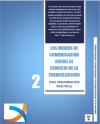Digital evangelization. "Sent to transcend borders" (55th General Chapter)
No one could imagine that the world context would radically change in 2020 due to the pandemic, a reality that made us rethink our way of "being" with the other, our way of "reaching out" to the other, making stronger and more demanding the call of the 55th General Chapter “… to transcend borders”.

After a time of silence and prayer, of search and discernment, we felt the need to "transcend", to get out of the known, to break schemes, to go beyond our fears, to seek new methods, to open ourselves to new horizons ... that is when the pandemic became an opportunity: a KAIROS.
Evangelizing through the Social means of Communication has been for us, for a long time, a constant invitation, embodied in our documents: “To enter the world of the Social means of Communication, assuming them as« new places of evangelization » through which the announcement of the Word becomes effective…”[1]. The pandemic made this invitation an imperative, which moved us to find creative ways to live and spread the faith. Today we can say that DIGITAL EVANGELIZATION WAS NEVER AS NECESSARY AS IN THESE TIMES!
We have made many efforts to venture into this medium, sharing through different digital platforms: videos, prayers, celebrations, live broadcasts, among others. However, we cannot think that Digital Evangelization consists only of that, we must respond to the existential concerns experienced by our brothers and sisters to whom our evangelization is directed, as Saint John Paul II said: “a New Evangelization: new in its ardor, methods and instruments. Seeking to respond to the needs of today's world people ”.[2]
We are urged for a digital evangelization that "speaks of God to men" and allows us to grow in faith. The challenge that we face today is to go from “digital users” to “digital evangelizers”, capable of creating “digital content” that is in tune with the needs of people and generates an interaction from the Gospel.
We are urged for a digital evangelization that "speaks of God to men" and allows us to grow in faith. The challenge that we face today is to go from “digital users” to “digital evangelizers”, capable of creating “digital content” that is in tune with the needs of people and generates an interaction from the Gospel.
The director of Catholic Link, Mauricio Artieda, proposes four very interesting keys for all digital evangelization:[3]
- To Connect faith with life: “to connect the mysteries of faith with reality ... what can this tell you, how it can feed you spiritually, how it has transformed the way you relate ... To help them understand the beauty that faith brings to their lives”.
- Christian realism: "Everything that is beautiful, everything that is good, everything that is true is Christian in the first place ... We must not be afraid to enter into dialogue with different realities and rescue what is beautiful, true and good that they have."
- Communicate from our vulnerability: “when we communicate from our vulnerability, people open their hearts, connect with us much better, wounds are a more direct path to the love of God”. "Open up and communicate."
- Help people to be free and choose for themselves: "Look at the richness of reality and choose ... I’ll help you; I will promote your ability to choose."
A digital evangelization project must have an identity, it becomes the perspective from where you build your message, the spirit you want to transmit, and from there create digital content that generates empathy and allows interaction. It is important to answer the question: what do I want to achieve? To Whom do I want to address? If there is identity in my evangelizing project, there will be identification and dissemination of it. Linked to identity is the way, how do I want to evangelize on the networks? it is the technical, the creative.
With these guidelines, let us continue creating spaces for digital evangelization, getting closer to people and announcing the Good News of the Kingdom, "in time and out of time."
Text: Sr. Rocío Cuéllar D.
_____________________________
Venture of the Congregation into the Social Media Communication (SMC)
“Our mission is to announce Jesus Christ…” C. 82. The Congregation always remained faithful to its mission to make the message of Jesus known, and to do this, it has made use of various technological resources that were available at different periods of its history. The SMC continue to be an opportunity and at the same time a challenge for this proclamation. We have taken steps in its use, but there is still a lot more, to take risk and to learn.

Sr. Maria Escayola Coris, Superior General, in her circular letter of March 10, told us: "We still have many challenges ahead to make the social means of communication a platform for the proclamation of the Gospel. However, it is an indisputable and indispensable means of communication and conversation with the world.” [1] This is a great challenge that, in the present situation that we are currently living through the COVID-19, has driven us to let go of our fear and risk using technology to announce the Gospel, to accompany us and make ourselves present at different times, circumstances or events, thus generating hope and strengthening bonds through virtual encounters.
Social communication, considered as one of the greatest dimensions of humanity, makes humanity forge a new culture because, as Pope Francis says: We are not born complete, but need to be constantly “woven”, “knitted together”. Life is given to us as an invitation to continue to weave the “wonderful” mystery that we are.[2] It is through communication that we come closer, that we make ourselves known and that we become more and more.
The Congregation has persistently invited us to reflect on SMC and take a stand. This call has its origin in our own apostolic project “to bring…wherever they are called, the knowledge of Jesus Christ and his mysteries.”[3] Let us take a look at this process that has allowed us to journey forward, to face the challenges to configure our work in the virtual world.
- In 1998, XII EGC of Cali, Colombia told us: "The new technologies of communication and of information, also engender new forms of analphabetism… therefore, we must enter with discernment in the world of technology and communication.”[4]
- In 2002, XIV EGC in Bangalore, India. "The importance of the means of social communication, the need to form ourselves for their correct use and to benefit from them for our apostolic projection.”[5]
- In 2004, the 52nd General Chapter opened the Congregation's website and in 2009 at the 53rd General Chapter, we were asked to pay attention to "formation and updating in the means of communication and in new technologies, stirring up a critical attitude in the face of their adequate use at the service of the mission”.[6]
- In 2006, the XV EGC of Mexico, saw that "“with the creation of the web page we were invited to greater communication among ourselves, in relation to the world, the mission and our own life in the Congregation…”[7]
- In 2008, the XVI EGC of Bucaramanga, "... values the information work through the Congregation’s web page, as well as those of the Provinces”.[8]
- In 2011, the XVII EGC of Cartagena, said "the means of communication and the new technologies also demand a formation according to circumstances”.[9]
- In 2013 the XVIII EGC of Cochabamba, continues with the reflection: "Make a better and wider use of the social means of communication at the level of the Congregation”.[10]
- In 2014, the 54th General Chapter of Tours - France, in the section on mission, reminds us that we need "To enter into the world of social means of communication, using them as “new ways of evangelization,” bringing the people to God and God to the people.”[11] In addition to the project on the SMC for Evangelization, two brochures were handed out: The media at the service of evangelization (a documentary approach and a practical approach).
- In 2019, the 55th General Chapter, La Turena - Bucaramanga, when speaking about the mission, invites us to: " Provide an adequate formation in …the critical use of the SMC for all the sisters from the initial stages.”[12]
Our lived experience throughout the year 2020 and in these first months of 2021, not only due to the global health crisis, but also the enthusiasm in the Congregation at the celebration of the year of grace of the 25 years of the Beatification of our Mother Foundress and now 325 years of our foundation, has allowed us to use the media better and in diversified ways, discovering its benefits much more. At the same time there is a need for a doctrinal and technological formation to proclaim the Gospel from virtual platforms and social networks. These new technological Areopagus allow us to generate hope, share our experience of God and reach so many people who thirst for God and Truth and who or else may be difficult to contact.
The figure of Pope Francis and his disposition to make use of SMC and its resources for evangelization, are a constant invitation for all of us. In his message for the 54th World Communications Day, Pope Francis tells us: "Amid the cacophony of voices and messages that surround us, we need a human story that can speak of ourselves and of the beauty all around us. A narrative that can regard our world and its happenings with a tender gaze"[13]. And in his latest encyclical Fratelli Tutti, he also reminds us that “the media can help us to feel closer to one another…We need constantly to ensure that present-day forms of communication are in fact guiding us to generous encounter with others, to honest pursuit of the whole truth, to service, to closeness to the underprivileged and to the promotion of the common good.” [14]
Text: Sr. Martha Mendieta Aztatzi
-
Will we be able to accept this challenge?
-
Will we be able to discover the inner beauty that inhabits within us and speak about it?
-
Will the fire of the Gospel burn in us that cannot be reserved for itself, but must burn in all and for all?
_____________________________
“We will be present wherever the Church calls us, wherever our brothers and sisters need us… willing to take the risks and to accept the sacrifices which evangelization entails” (C 84)
 In the context of the pandemic, it is impossible to deny the great importance that Media and Social Communications (SMC) have attained in our lives; they have become an effective method of interaction, contact and relationship, because it is through them that we find a real, valid and timely space to keep communication alive between people, nurture it and enable new ways that open horizons for human communications.
In the context of the pandemic, it is impossible to deny the great importance that Media and Social Communications (SMC) have attained in our lives; they have become an effective method of interaction, contact and relationship, because it is through them that we find a real, valid and timely space to keep communication alive between people, nurture it and enable new ways that open horizons for human communications.
During this time, we have been able to recognize that the SMC has a key role in evangelization; it is not a matter of creating web pages or social networks, but of understanding that these are opportunities where the Word takes on a fundamental role, prioritize truth, voices are heard and life begins to be knitted together from different dimensions. From this perspective, today we are called to ask ourselves in what way we must be present in these new places of mission, since "we will be present wherever the Church calls us and where our brothers and sisters need us.”
The 55th General Chapter invites us to use Social Means of Communication as platforms for the proclamation of the Gospel. Therefore, we assume this call with the conviction that beyond the dangers that this new space of mission may represent, we have to embrace with hope this new possibility for proclaiming the Gospel, because it is in these spaces where people, especially the youth, are reached in great numbers. To deprive ourselves of this possibility would be to deny the truth of the social fabric that is created through virtual networks.
It is necessary to look for indications for action that will lead us on the most sensible path, where we are, respecting the cultures and languages that we are discovering in the midst of our brothers and sisters. We need to loose fear of these new technologies because beyond being a threat they offer us an opportunity.
The way of living has changed us, surprisingly sometimes even violently. But with courage, audacity and prudence we will be able to respond with the newness of God that expresses creatively in us, in the new forms of communication. We must be open to these changes and face them with hope, so that we can speak, walk and tell the story. As Pope Francis told us in his message for the 54th World Day of Social Communications: "I believe that, so as not to lose our bearings, we need to make our own the truth contained in good stories. Stories that build up, not tear down; stories that help us rediscover our roots and the strength needed to move forward together. Amid the cacophony of voices and messages that surround us, we need a human story that can speak of ourselves and of the beauty all around us. A narrative that can regard our world and its happenings with a tender gaze. A narrative that can tell us that we are part of a living and interconnected tapestry. A narrative that can reveal the interweaving of the threads which connect us to one another.”
Text: Commission for Media and Social Communications viceprovince of Aconcagua
At the Service of Evangelization
“Go therefore and make dis ciples of all nations...” Mt 28:19
 The new technologies not only change the way we communicate, but it evolves communication itself, the way we relate, how we think, and it affect strongly our decisions, especially if they have to do with the social, economic and professional arenas; it transforms our lifestyle. The need for communication is inherent in the development of a human being. To be human is born from and in communication and communication is the way to communion. We become persons to the extent with which we communicate: "Communication is an essential point for our homes to be transformed into communities and not mere aggregates of men and women of good will" (Relaciones humanas en comunidad. Instrumentos de ayuda de Luis López Yarto, pág. 14).
The new technologies not only change the way we communicate, but it evolves communication itself, the way we relate, how we think, and it affect strongly our decisions, especially if they have to do with the social, economic and professional arenas; it transforms our lifestyle. The need for communication is inherent in the development of a human being. To be human is born from and in communication and communication is the way to communion. We become persons to the extent with which we communicate: "Communication is an essential point for our homes to be transformed into communities and not mere aggregates of men and women of good will" (Relaciones humanas en comunidad. Instrumentos de ayuda de Luis López Yarto, pág. 14).
As Dominican Sisters of the Presentation our Charism is to proclaim Jesus Christ. As expressed by Marie Poussepin, our Foundress: "to bring the knowledge of Jesus Christ and His Mysteries where ever the sisters might be called.” We are affiliated to the Dominican Order whose founder St. Dominic de Guzman lived and founded his order for Preaching. Therefore, we are called to preach today using the Means of the present day: The New Technologies.
To bring the knowledge of Jesus Christ and His Mysteries where ever the sisters might be called
Our present society is referred to as an Information Society, of knowledge and communication, of shared insights (classification it received at the World Summit on the Information Society (CMSI) held in 2003 in Geneva). Information and communication, from new technologies, contribute significantly to the expansion of human consciousness, the development of new and more complex forms of intellectual and spiritual awareness; expand our field of vision far beyond the space we occupy and the time in which we exist. We have been exposed to a vast universe and relate with the values of people from diverse cultures. So, the Congregation has adopted the slogan of Dominic de Guzman "To speak to God and of God" and has used all conventional means to reach out to others with the Gospel message, with the help of the Holy Spirit, the communicator par excellence, using Social Means of Communication as tools for evangelization and encounter.
Text: Sr. Gloria Eugenia Piedrahita T.
√ The commission for the Means of Social Communication prepared two booklets for the General Chapter of 2014, one theoretical and another practical - to use Media and Communication for Evangelization:

